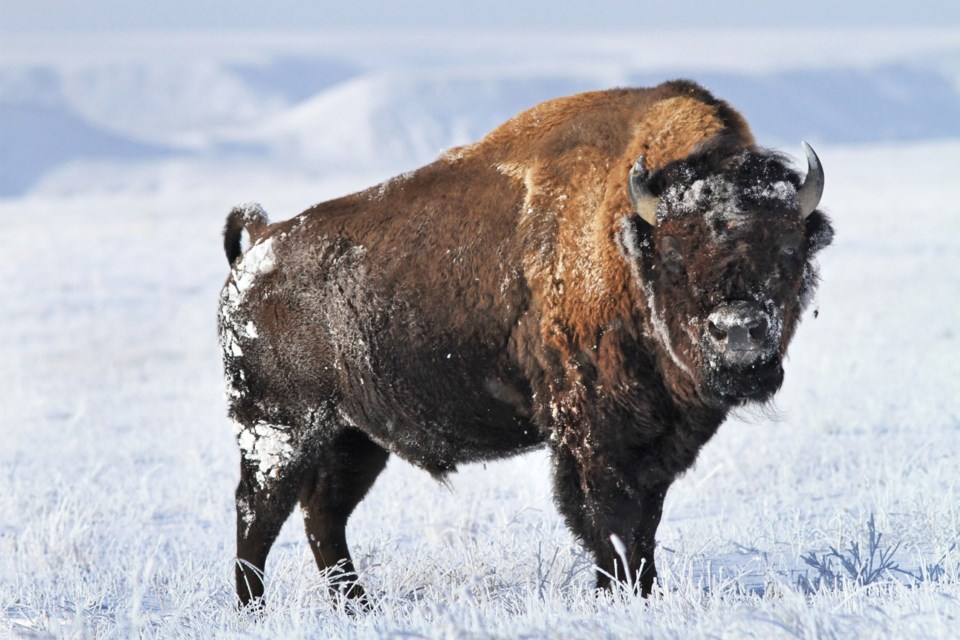Wildlife and nature enthusiasts of all descriptions will find something of interest at the Cochrane Ecological Institute’s symposium in Bragg Creek on Saturday, March 2.
The theme of the world-class conference is "Wilderness, Wildlife and Human Interaction." The CEI conference’s goal is to explore new perspectives aimed at generating a new way of approaching how humans and wildlife co-exist.
The promotional material for the symposium summarizes it as: “Focused on examining and creating innovative methods of moving from current economic and environmental stalemate and conflict to a sustainable and a healthy planet. Only our imaginations set the limits.”
Wes Olson will be one of the featured speakers. He’s a retired national parks warden and the author of The Ecological Buffalo, a book he wrote with his wife. He was raised in the Foothills, where family camping, hunting and fishing trips began a life-long association with wild places and wildlife.
Olson has developed an international reputation for his knowledge about both plains and wood bison, developed over 30 years working with them.
There were 50 to 60 million buffalo on the Great Plains of North America when the Europeans came. By 1889 there were less than 1,000.
“They went from the most dominant species to virtual extinction,” he said.
Today, their numbers are estimated at 500,000.
Olson would like to see that number grow – both as wild herds and on ranches.
“I’m an advocate for getting bison back on native landscapes wherever possible,” he said. “Particularly on First Nations.”
In addition to his research and writing, Olson uses graphite, watercolour, oil painting and mixed medium artwork to capture the buffalo and other wildlife in their natural environments.
The closest wild herd to the Cochrane area would be the one introduced to Banff National Park in 2017, when 16 were released. There are now about 100.
Olson has been a keynote speaker at conferences, seminars and naturalist groups across Canada and the United States and continues to give presentations about bison and the ecosystem roles they play.
After a 25-year career as an advertising photographer in Toronto, Joseph Duff partnered with metal sculptor Bill Lishman in 1993. The two artists turned naturalists used ultralight aircraft to lead 18 Canada geese from Ontario to Virginia, completing the first human-led bird migration. Their initial study attracted the attention of the scientific community and the idea of using their technique to reintroduce endangered avian species was hatched.
After working with Sony Columbia to produce the major motion picture Fly Away Home and establishing Operation Migration as a registered charity, they conducted a series of migration experiments with sandhill crane and trumpeter swans. He is currently working on a proposal to reintroduce muskoxen into the area near Churchill, Manitoba, and another to safeguard the habitat of the deep snow mountain caribou in the temperate rainforest of central BC.
Another presenter will be Martin Charles Fox (Piitahonista, Eagle Calf), an elder of the Kainai Nations sacred Horn Society and an advocate for the Blackfoot culture and language, probably known better to area residents as Charlie.
As a residential school survivor, Fox shares that experience to help curb the effects of forced assimilation. He credits his loving parental upbringing, family and his people's Spirituality.
Fox's agricultural home environment led him to horsemanship skills and a Texas A & M Therapeutic Instructor Certificate. His other interests in the arts and crafts are worn by traditional leaders. He has coordinated Kainai Chieftainship inductions since 1978 and is inspired by his rich Blackfoot culture and heritage, which he gladly shares with the rest of the world.
Ali Morrison is a classical musician with a passion for music, art, and creating unique performance pieces such as the “Boat Ballet” involving 36 sea vessels including kayaks, fishing boats, the Dun Laoghaire Youth Sailing Club and the Irish National Rescue boat in the Dublin Harbour for the Lobster, Crab and All That Jazz Festival. Now living in Canada, she is expanding her lifelong connection to nature that is far wilder than that in Europe and grappling with Canadian winters.
Mike Judd will also be one of the featured speakers.
Judd was born and raised on the east slope of the Alberta Rockies in the Foothills west of Pincher Creek. His knowledge is based on formal education and accompanying old mountain men on their travels. For much of his life, Judd has been a guide and outfitter involved in hunting, trail riding along the Continental Divide and dog sled tours in the winter.
He is one of the founding members of a new organization, the Foothills Bison Restoration Society, and will be presenting its ideas for bringing bison to some public wild lands along the eastern slopes.
Judd is also a painter and will be showcasing some of his artwork at the symposium.
The symposium will be hosted at the Bragg Creek Community Centre, 23 White Ave., from 9:30 a.m. to 5 p.m.
For tickets or more information about the work of the institute, go to ceiwildlife.org.
The CEI is funded through charitable donations and the occasional grant – there is no provincial funding. Proceeds from the symposium will go towards running the rehabilitation centre.
The CEI is a registered charitable wildlife organization, whose expertise in rehabilitation based on scientific research has been recognized internationally. It has received the Order of the Bighorn from the Province and an Emerald Award from the Calgary corporate sector. Its advisory team has representation from Indigenous groups, internationally recognized academic specialists, farmers, ranchers and others.




